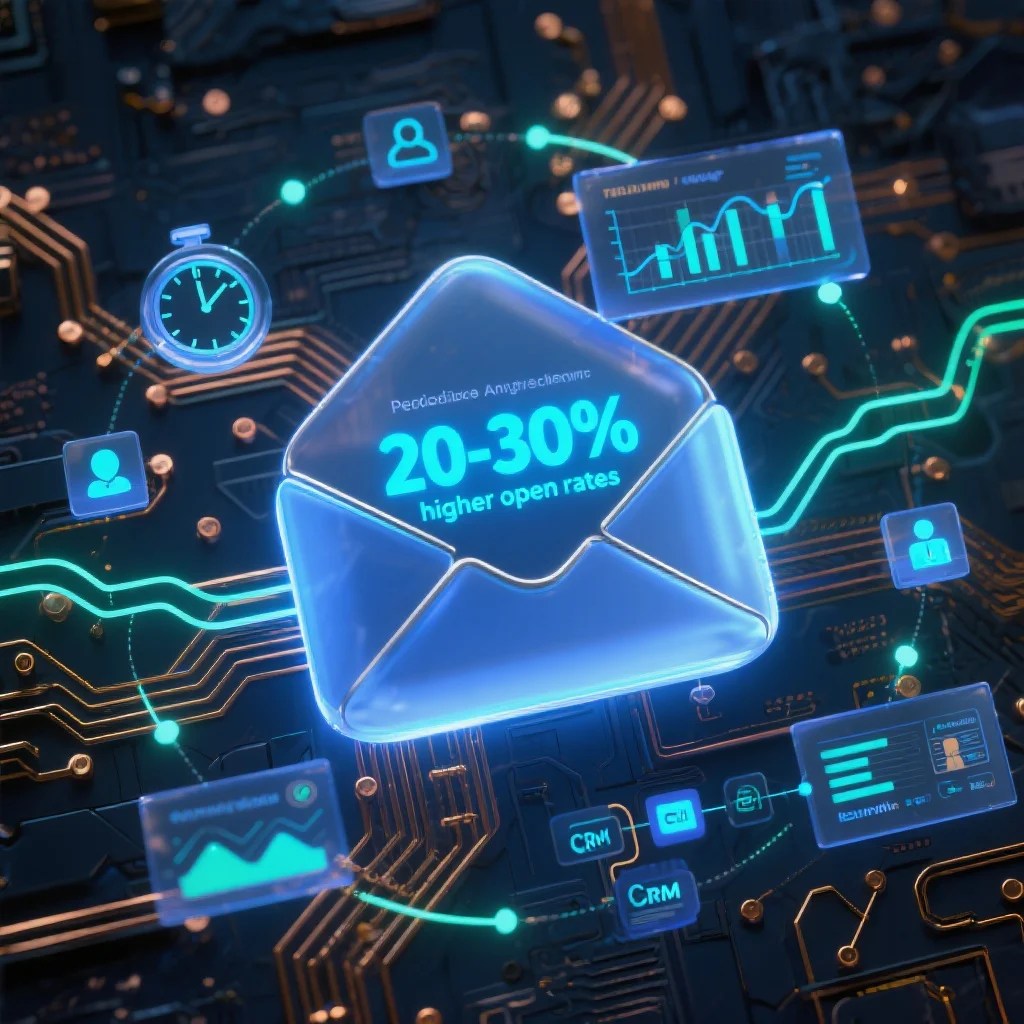If you’ve been following the AI revolution, you know it’s not just hype – it’s reshaping every corner of marketing with real, tangible results. Email marketing, that tried-and-true workhorse of digital strategies, is getting a massive upgrade thanks to AI. Gone are the days of generic blasts that end up in spam folders; AI is making emails smarter, more personal, and incredibly effective. In this post, we’ll dive into how AI is revolutionizing email marketing right now, highlight the key benefits in bullet points for easy scanning, and peek into what the future might hold. Let’s get into it – because this tech is a game-changer.
Why AI is a Game-Changer for Email Marketing Today?
Email marketing has always been about making full use of the pillars of marketing – reaching the right people with the right message at the right time. AI supercharges this by crunching massive amounts of data, predicting behaviors, and automating the grunt work, all while keeping things human-centered. Marketers who embrace it are seeing open rates skyrocket, conversions climb, and ROI soar. It’s not about replacing creativity; it’s about amplifying it with machine precision.
Here are the key highlights of AI’s current impact, broken down into bullet points for quick insights:
- Hyper-Personalized Content Creation: AI analyzes user data like past purchases, browsing history, and engagement patterns to craft tailored email content. For instance, tools like those from Mailchimp or Klaviyo use AI to generate subject lines and body text that feel custom-made, boosting open rates by up to 20-30% in many campaigns—because who doesn’t love an email that speaks directly to them?
- Smart Segmentation and Targeting: Forget manual list sorting; AI automatically segments audiences based on demographics, behavior, and even sentiment analysis from previous interactions. This means sending the perfect offer to the right subgroup, reducing unsubscribe rates and increasing relevance—think of it as having a psychic assistant who knows exactly who needs what.
- Predictive Analytics for Optimal Timing: AI predicts the best send times by studying when subscribers are most likely to engage, factoring in time zones, work habits, and historical data. Services like Sendinblue leverage this to schedule emails that land in inboxes at peak moments, often improving click-through rates by 15-25% without any guesswork.
- Automated A/B Testing and Optimization: AI runs endless tests on variables like subject lines, images, and calls-to-action, then auto-optimizes based on real-time results. This iterative process, powered by platforms like ActiveCampaign, ensures campaigns evolve quickly, saving hours of manual tweaking and delivering higher performance with each iteration.
- Enhanced Deliverability and Spam Avoidance: AI scans emails for spam triggers, suggests improvements, and even monitors inbox placement. Tools integrated with Gmail or Outlook use machine learning to refine content, helping marketers maintain high deliverability rates and build trust—crucial in an era where one wrong move can tank your sender reputation.
- Content Generation and Curation: From writing compelling copy to suggesting images or product recommendations, AI generators like those from Jasper or Copy.ai create draft emails in seconds. This frees up marketers to focus on strategy, while ensuring content is engaging and error-free, often leading to faster campaign launches and more creative experimentation.
These aren’t just nice-to-haves; they’re proven boosters. Studies from sources like HubSpot show that AI-driven email strategies can increase revenue by 10-20% for businesses that implement them effectively. It’s confident proof that AI isn’t disrupting email marketing—it’s elevating it to new heights.
How AI Might Evolve Email Marketing in the Future?
Looking ahead, AI’s role in email marketing is poised to get even more sophisticated as technology advances. By 2030, we could see seamless integrations with emerging tech like augmented reality (AR) and advanced natural language processing (NLP), making emails not just readable but interactive experiences. Predictive models will likely become hyper-accurate, using real-time data from IoT devices or social media to anticipate needs before they arise—imagine an email that adapts its content mid-delivery based on the recipient’s current mood or location.
Ethical AI will be a big focus, with regulations pushing for transparent data use and bias-free algorithms to maintain consumer trust. We might see “conversational emails” powered by chatbots that turn static messages into dynamic dialogues, blurring the lines between email and instant messaging. Overall, the future points to even more personalization at scale, where AI handles the complexity while humans steer the creative vision, potentially doubling efficiency and engagement rates. It’s an exciting trajectory—one where email marketing becomes less about volume and more about meaningful, anticipatory connections.
In summary, AI is already making email marketing smarter, faster, and more effective, and its future evolutions promise to push boundaries even further. If you’re a marketer, now’s the time to dive in and experiment— the results will speak for themselves.

